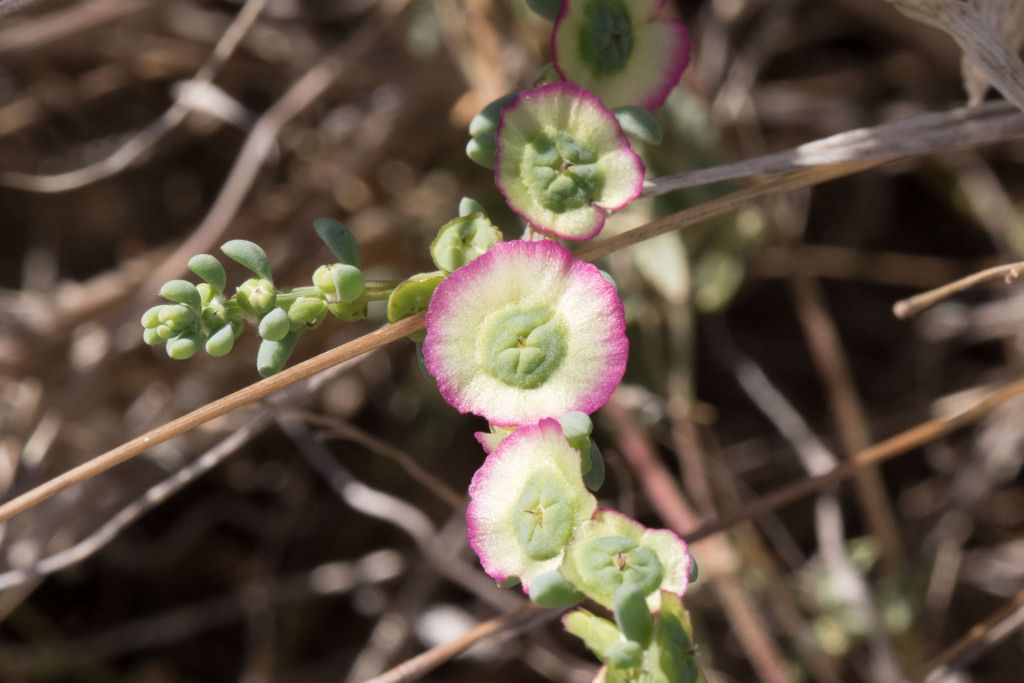Maireana obrienii
N.G.WalshErect shrub to 80 cm high; branchlets glabrous except for conspicuous tufts of hairs in leaf axils. Leaves alternate, narrowly ovoid to clavate, 3–6(–10) mm long, fleshy, glabrous. Flowers bisexual, glabrous or ciliate on margins of lobes. Fruiting perianth 10–13 mm diam., perianth lobes slightly enlarged; tube shallowly hemispherical 3.5–4.5 mm diam., thin-walled, truncate or slightly domed at apex; wing horizontal, ±flat with distinct rosy pink margin; radicular slit present on wing, often extending down tube. Fruits Dec.–May.
VRiv, Gold. Occurs in grasslands on the northern plains of Victoria between Inglewood and Echuca. Known also from a council reserve in Californian Gully near Bendigo, where it is likely to have been inadvertently or deliberately introduced. The population appears to be expanding at that site.
Apparently closely related to M. decalvans, from which it is distinguished by its generally taller habit, glabrous stems, broader and often shorter leaves, and larger fruits with an unlobed wing that is usually brightly coloured around the rim.
 Spinning
Spinning
